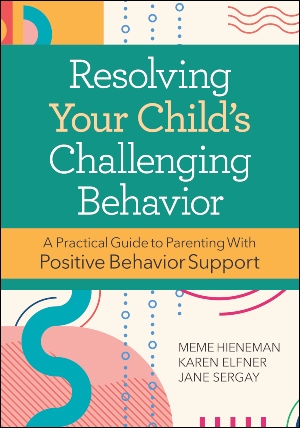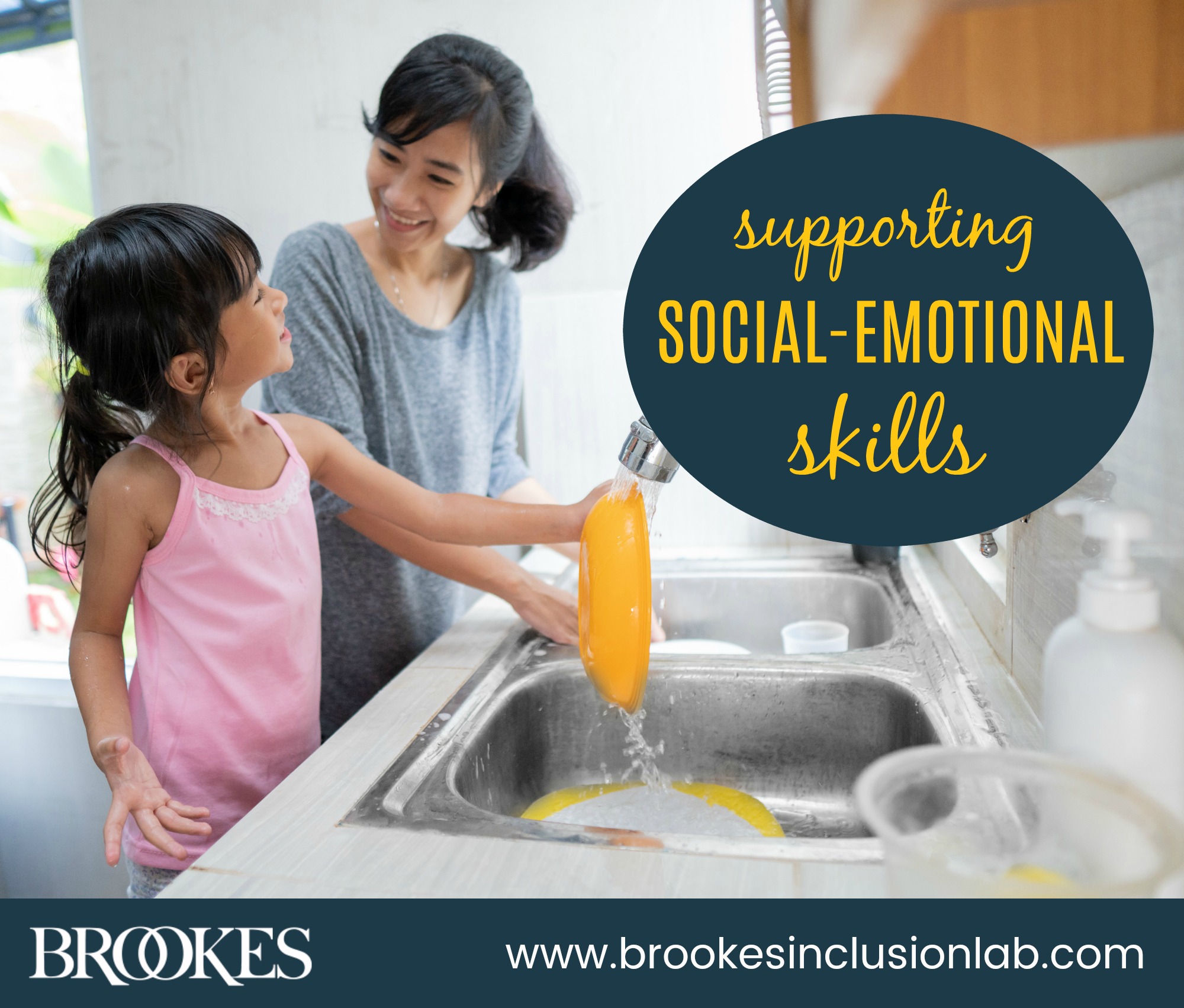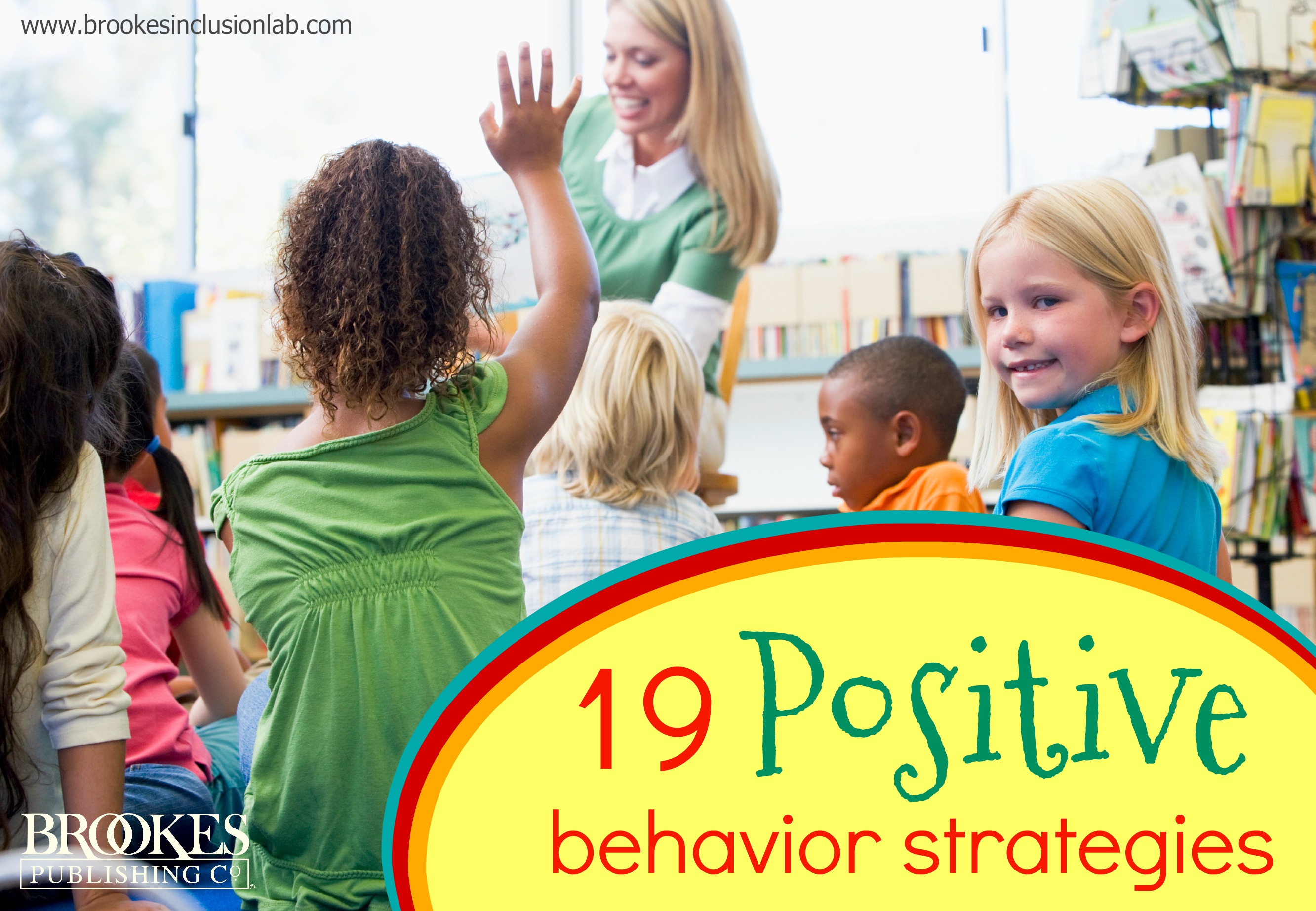If you’re an early childhood professional, you’re probably already using positive behavior support (PBS) with the young children in your classroom or program. To reinforce the positive effects of PBS, it’s also crucial to provide information and support to families and show them how to put PBS strategies to work in their own homes.
In today’s post, we’re highlighting two practical new books designed to help families use PBS to solve a wide range of specific behavior issues and strengthen their overall family functioning. Written by behavior experts and parents, Helping Your Family Thrive and Resolving Your Child’s Challenging Behavior are filled with tips, guidelines, and resources parents can use to improve their home life and build stronger bonds with their children. Read on to get an introduction to each of these guidebooks and hear from the author teams, who answer three important questions about how their books can help you help families.
Remembering Meme Hieneman
The lead author of the guides featured in today’s post, Meme was an influential consultant, researcher, educator, and advocate. A certified behavior analyst, Meme worked to support children with severe behavioral challenges and their families for more than three decades. Brookes honors her legacy and thanks her for the difference her work continues to make in the lives of countless families. Learn more about Meme Hieneman here.
 Helping Your Family Thrive
Helping Your Family Thrive
By Meme Hieneman, Sarah Fefer, Shane Isley, & Missy Sieders
In a nutshell: Evidence‐based, culturally sensitive, and family friendly, the PBS process in this book is an ideal way to prevent challenging behaviors before they occur and improve overall quality of life for whole families. Through five critical steps that are clearly explained, parents will learn how to lay a foundation for better family functioning.
3 questions with Sarah Fefer, Shane Isley, & Missy Sieders:
Busy parents may be overwhelmed by the number of behavior guides available on the market. What key feature (or features) sets your book apart from other guidebooks on positive behavior support?
This book helps parents approach their children’s behavior proactively, positively, and functionally. Unlike many other books, the authors do not focus on how parents can address their children’s challenging behavior. Instead, we present parents and caregivers with a comprehensive approach that involves proactive and preventative strategies, teaching skills, and managing consequences.
Parents and caregivers will learn how to apply the Positive Behavior Support process to support desired behavior for all family members and improve the overall functioning and quality of life for the entire family unit. The tools and strategies presented in the book are appropriate for all age ranges, from children to adults.
The book is not a “behavior guide” for addressing an individual’s challenging behavior. Instead, it describes a family-focused process that encourages and supports the engagement of all family members in the assessment and implementation of agreed-upon solutions. The process outlined in this book is meant to be adaptable, flexible, and often revisited rather than prescribed or set in stone. It helps each family develop unique solutions that apply specifically to their family, so it’s not a one-size-fits-all program. The book is written so that families can pull from a select few sections, or if they prefer, they can follow the process step by step. We also offer case examples that include many types of families, which is very helpful for readers.
Can you talk a little bit about the practical downloads included with the book? How will they help families apply your guidance to their everyday life?
The exercises in this book enable families to set the stage for desired behavior by helping parents organize their family’s social and physical environments. Below we selected a few digital downloads that we believe will be most helpful to families:
PBS Self-Check. We selected this assessment tool because it helps families:
- pinpoint and prioritize specific challenges to address first
- establish an initial roadmap/a clear starting point, reducing or minimizing common barriers related to avoidance behavior (e.g., “There are too many problems, we don’t know where to start.” “There is so much to do, it’s too overwhelming.”)
- tailor solutions to their individual family contexts
- identify their strengths and what they do well individually and collectively
Family PBS Plan. The plan encompasses all elements of the process presented in this book. We’d like to highlight the following sections:
- Family Vision: This section of the family plan helps families identify how they see themselves, where they want to go, what’s most important, and what they truly value.
- Family Expectations: This section helps families clarify and document behavioral expectations for all family members.
What would you say are the most important things that parents will be able to do after reading your book?
This book empowers parents to create their desired environment, where they want to live and raise their children. Families will walk away with a unified approach to how they want to live their lives, guided by a defined set of core values.
Through this book, families will establish and sustain a more robust family unit that supports individual family members in reaching their full potential. This book enables families to thrive under their unique circumstances by walking them through a comprehensive plan for supporting their family.
 Resolving Your Child’s Challenging Behavior, Second Edition
Resolving Your Child’s Challenging Behavior, Second Edition
By Meme Hieneman, Karen Elfner, & Jane Sergay
In a nutshell: Perfect to use in tandem with Helping Your Family Thrive, this book focuses more on addressing specific behavior issues. Families will get the resources and knowledge they need to respond to a wide range of challenging behaviors with PBS, create effective individualized support plans, and track their progress.
3 questions with Karen Elfner & Jane Sergay:
Busy parents may be overwhelmed by the number of behavior guides available on the market. What key feature (or features) sets your book apart from other guidebooks on positive behavior support?
Here are three of the key features in this book that we’d like to highlight for potential readers:
- Tools for understanding behavior. This book provides practical tools to help parents understand their child's behavior, which will empower them to manage it successfully.
- Case studies and video illustrations. The book provides several case studies illustrating the process from beginning to end and links to videos of practiced routines that demonstrate each phase of the process.
- Downloadable tools. The same tools used in the case studies modeling the process throughout the book are available for readers to download and use themselves.
We selected these as key features to highlight because they are different from many other resources for parents in dealing with behavior. The steps to understanding behavior are grounded in evidence-based science. Once parents learn the process, they can apply this new skill to other situations (and children).
Can you talk a little bit about the practical downloads included with the book? How will they help families apply your guidance to their everyday life?
The downloadable items are tools that will help families gather information about the challenging behavior, organize what they learn about the behavior to develop a clear understanding, and create a plan of action that will bring about the behaviors they desire.
If we had to pick one tool that captures the essence of the understanding that parents achieve, we’d refer to the Pattern Analysis tool. This tool is used after gathering information (whether that’s through interviews, talking, or data collection). It summarizes the information collected in a very clear and accessible way, so that parents often come away with an “aha” that leads to effective intervention plans.
What would you say are the most important things that parents will be able to do after reading your book?
When faced with their child’s ongoing challenging behavior, parents often feel defeated and hopeless, as if they cannot influence the behavior. We wrote our book to empower parents—to take the knowledge and practice developed by behavior scientists and make it accessible to families. After reading our book, parents will be able to apply the steps we outline to their own situation. In our experience, parents have felt empowered after reading our book and learning that they can positively influence their children's behaviors.
GET THE BOOKS

Resolving Your Child's Challenging Behavior, Second Edition
By Meme Hieneman, Ph.D., BCBA, Karen Elfner, M.A., & Jane Sergay, M.Ed.

Helping Your Family Thrive
By Meme Hieneman, Ph.D., BCBA, Sarah Fefer, Ph.D., BCBA, Shane Isley, M.S., BCBA, & Missy Sieders, B.A.
Stay up to date on the latest posts, news, strategies, and more!
Sign up for one of our FREE newslettersMore posts like this

11 Simple Things You Can Do To Support Young Children’s Social-Emotional Skills
October 27, 2020
19 Tips on Supporting Positive Behavior & Social Skills
December 13, 2016


Write a Comment
Your email address will not be published. Required fields are marked *
Post a Comment